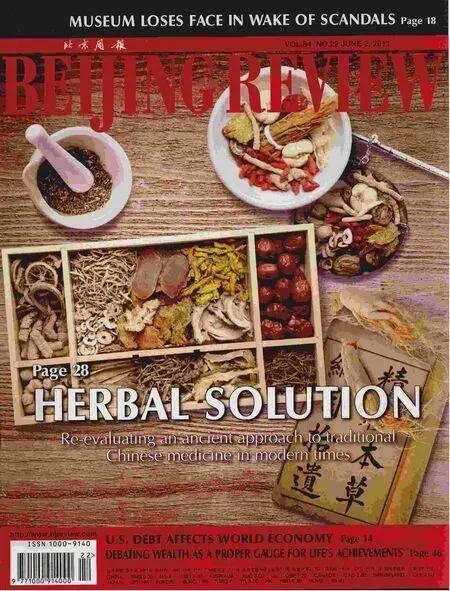A New Paradigm for China-U.S. Ties
2011-12-24ByDINGZHITAO
By DING ZHITAO
A New Paradigm for China-U.S. Ties
By DING ZHITAO
Chinese President Hu Jintao and U.S. President Barack Obama made headway on many fronts during the Chinese leader’s recent visit to Washington. The two leaders issued a joint China-U.S. statement that laid the foundation for future cooperation between the two countries, announced dozens of job-creating business deals worth several billion dollars and said that two Chinese pandas will extend their stay at Washington, D.C.’s National Zoo.
President Hu’s state visit to the United States, from January 19-21, was an important milestone in China-U.S. relations. Obama said the visit was as signifcant and historic as the 1979 tour of the United States by Deng Xiaoping. The 1979 visit helped make cooperation between the two once bitter rivals possible and initiated 32 years of fruitful interaction across the Pacifc. The U.S. President predicted Hu’s visit would lay the foundation for China-U.S. relations for the next 30 years.
The leaders of the world’s largest developing country and largest developed country took the summit as an opportunity to rebuild mutual trust after friction over the past year. They also set out priorities for future cooperation and reached broad consensus on many issues. Most notably, they pledged to forge a China-U.S. “cooperative partnership”based on mutual respect and mutual beneft.
During the Clinton presidency, the China-U.S. relationship was described as a “constructive strategic partnership.” During the George W. Bush administration, the paradigm of the China-U.S. relationship shifted over time. China and the U.S. were frst viewed as “strategic competitors.” The two countries then entered an era of “constructive and cooperative partnership” and subsequently were viewed as“stakeholders.”
While stressing areas of cooperation, we know differences exist. Since diplomatic ties were established, relations between the two countries have witnessed many ups and downs. With different social systems, levels of development and cultures, it is only natural for the two nations not to agree on everything. Only by abiding by the three joint communiqués of the 1970s and early 1980s, as well as the two joint statements signed in 2009 and 2011, and respecting each other’s core interests and stands on regional and international issues, can bilateral ties develop in a sound and steady manner.
As Hu said, China and the United States “stand to gain from a sound China-U.S. relationship and lose from confrontation.” Indeed, a sound bilateral relationship between these two heavyweight countries has profound global signifcance. Reassuringly, the latest Hu-Obama summit set a positive tone for China-U.S. ties and sent a cheering signal to the world.
